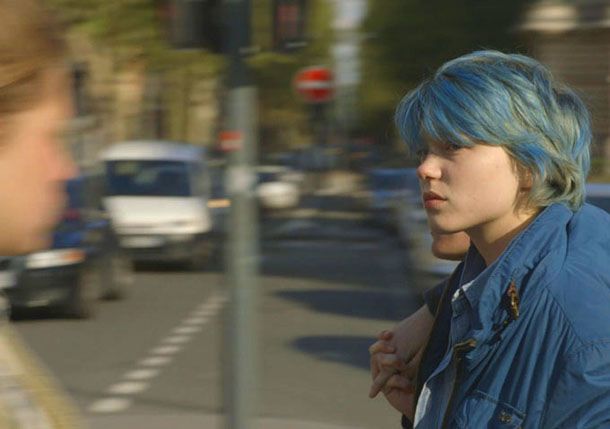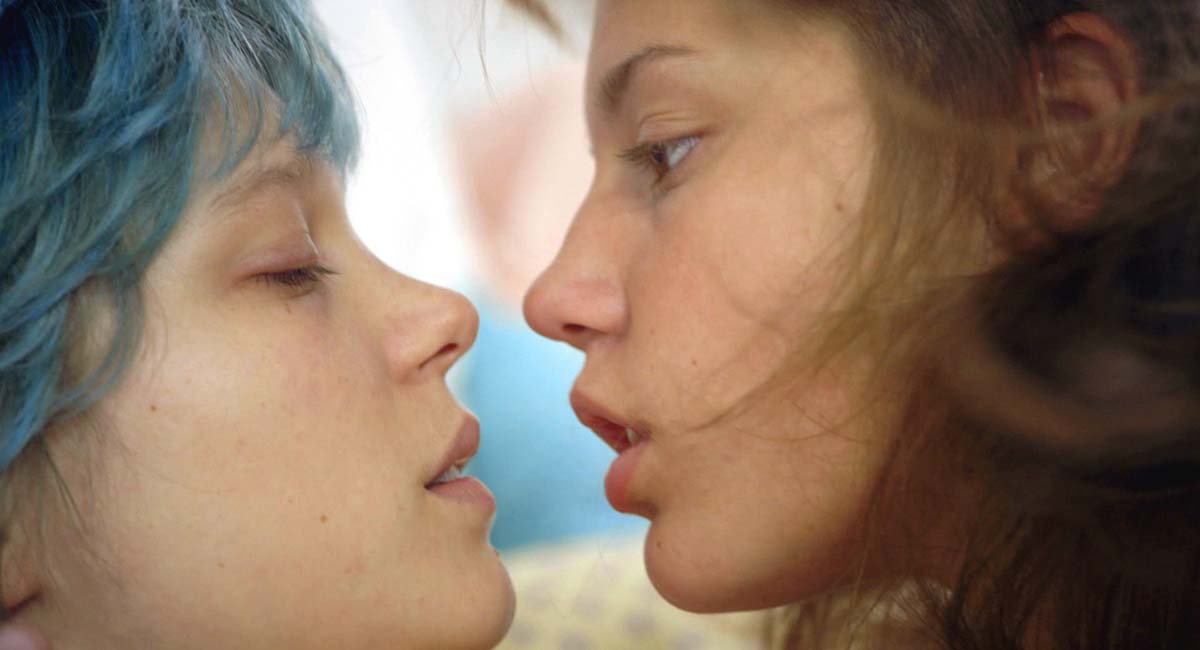On the occasion of the palme d’or awarded to “La vie d’Adèle” by Abdel Kechiche, we offer you again the chronicle of “Blue is a warm color” by Julie Marhog from which the film is inspired.
Like many love stories, this one begins with a look.
Puzzled look at first, then a little too insistent to be completely innocent. Perplexity, nascent desires but repressed because difficult to accept. Recurring dreams where bodies mingle, where pleasure is given, without fear and without remorse. Then the awakening, painful, which signals the return of fear, of shame. Until the day when, unable to hold it any longer, Clémentine gently slips into Emma’s arms.

Love is never easy for a teenager who discovers her first emotions, it is even less so for Clémentine whose impulses, forbidden, carry her towards a beautiful young lady with blue hair. In addition to managing the vagaries of any romantic relationship, she will have to understand this extraordinary passion that has taken hold of her and above all learn to face the judgment of others. Fragile balance than that of a young lesbian in these times when, despite the evolution of mores, showing herself as she really is is not obvious. Julie Maroh, certainly drawing on her own life experience, perfectly translates the sometimes contradictory emotions that arise from such a situation and the slow journey towards acceptance. Its design, all in finesse, conveys an impression of softness that reflects the purity of the feelings of Emma and Clémentine.
With, implicitly, a great fragility, as if all this was too good to last.
Even more than the words, whether they are exchanged orally or entrusted to a diary, it is the silences and the looks that carry the story and reveal the thoughts. Importance of gestures, too, of a hand that reaches out to help, lets itself be taken in the hope of comfort, trembles with fear at the idea of touching this long-desired body… or on the contrary pushes back, rejects and yields to the violence of a rebellious soul. Because of revolt, it is also a question in this book which does not content itself with depicting a relationship, but also acts as an act of commitment. Impossible, indeed, to offer such a story without mentioning the delicate place occupied by the homosexual community in our society. And there again, Julie Maroh operates with tact, without any heaviness and playing the card of the obviousness of the feelings to make just as obvious the rights which result from it. The right to be happy, quite simply, to lead one’s life as one sees fit, without finding in the eyes of one’s neighbor that surprise which, fed by incomprehension, can turn into hatred.

Sad at times, always passionate, Clémentine and Emma’s journey can be discovered and tasted with pleasure, without haste. Julie Maroh signs with The blue is a warm color a first album that is both intimate and committed, never giving in to didacticism and defending in the best possible way the cause of those who love each other with a love that is difficult to assume in the big day: by a fictionalized story, beautifully told and illustrated.
